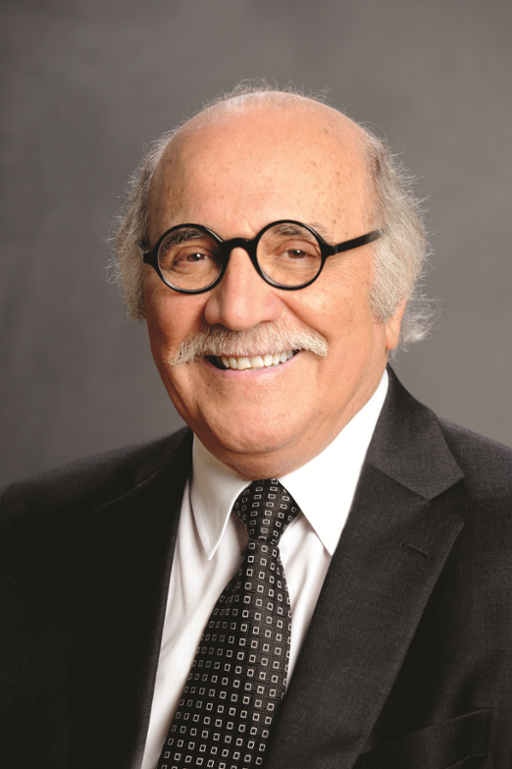
I’ve had a lot of dreams. Musical ones. I’ve always believed that much of what’s happened in my career are things that began with a dream. Sounds corny, but it’s very true. Dreams gave me something to strive for. I’ll give you an example of one.
As a kid, one thing I always loved about the ritual of playing records was reading the album jacket. There were stories inside the stories. I would stare at the photos on the front and back and wonder, “What are they thinking about in this photo?”, “Wow, it looks like they are JAMMING in this photo. Wonder what song they were playing?” After I would immerse myself into a photo, I’d move from that to the credits. My mom and I always paid close attention to who the musicians were, the studio, executive producer, producer, associate/assistant producer, engineer, assistant engineer, photographer, etc, etc. I often saw the same musicians on so many different albums – Joe Sample, Wilton Felder, Don Grolnick, Steve Gadd, Ron Carter, Eric Gale, Chuck Rainey, Bernard Purdie, David T. Walker, Richard Tee, Hilda Harris, Maretha Stewart, Paul Jackson, Jr., Phil Upchurch, Bob James, Jon Faddis, Cornell Dupree, David Sanborn, Michael & Randy Brecker, Will Lee, Buddy Williams, Hiram Bullock, Lew Soloff, Marcus Miller, Ralph MacDonald and so many more.
If you’re reading my blog, you’re most likely thinking that I’m talking about all the many jazz albums they played on. I’m not thinking about jazz albums at all! I’m thinking of all the many POP and FUNK albums they played on. From Stevie Wonder to Parliament/Funkadelic to Linda Ronstadt to Aretha Franklin, I didn’t understand how so many of these particular names wound up on so many records. I soon learned they were “session cats” or “studio rats” or “guns for hire.” The idea of being a “session cat” was so fascinating to me. How did that happen? Did you just become so awesome that every recording artist in the world just personally called you? Was there a union you had to join? Was there an audition process to being a “session cat”? I wanted to know badly! In the middle of all of my other dreams of playing with my many musical heroes, I also dreamed of becoming a “session cat.” It wasn’t a goal…..yet. I had to learn the rules first.
On most of the soul, pop & rock records I listened to, the producers ranged from Quincy Jones to Norman Whitfield to George Duke to Arif Mardin to Ted Templeman to Nile Rodgers to my hometown heroes, Kenny Gamble and Leon Huff. But it was ambiguous to me what producers did. I thought if you had Joe Sample, Eric Gale, Will Lee, Steve Gadd and Ralph MacDonald as your rhythm section, what in the world would you need a producer for? I clearly remember questioning a producer’s role after staring at and studying the credits of Quincy Jones’s album “Body Heat.” I must have been 8 or 9 years old. I asked my mother since it looked like Quincy didn’t sing or play an instrument, how could this be his record? My mom said, “Well, he produced it.” Confused, I asked, “Producers can make their own records? I thought you had to sing or at least play an instrument.” I somehow remember my mother saying something to the effect of, “Really GOOD producers make important contributions. The fact is, there aren’t that many really good producers. Just a bunch of guys sitting around with sunglasses trying to act like they know what they’re doing.” So maybe that meant GOOD producers knew how to make great musicians sound even better? It made more sense to me that a producer made artists who maybe weren’t so good sound better. But then it got even more confusing as I started to get into jazz and became aware of the high level of musicianship that style of music demands. I noticed every jazz label had an in-house producer – Blue Note had Alfred Lion, Riverside had Orrin Keepnews, Capitol had David Axelrod, and Columbia had Teo Macero, who produced the famously obstinate Miles Davis. I thought, “Wait…..jazz musicians need producers?? Jazz musicians don’t need anyone telling them if it sounds good or not!” Or maybe they did! I didn’t know.
One of my earliest experiences in a recording studio set a bad tone for me when it came to producers. In my junior year of high school, my dear friend, alto saxophonist Robert Landham, called me for a recording session. We were to lay down a track for a cabaret singer. The song was More (The Theme from Mondo Cane). The producer struck a humorous resemblance to Mr. T. He was a very large black man with a LOT of gold jewelry and the attitude to match. I remembered my mom’s sentiment concerning producers “….sitting around trying to act like they know what they’re doing.” I couldn’t help but think that this guy looked a bit odd producing a standard that Sinatra and others have recorded. Once we started to play, we didn’t get more than 8 bars in, and he comes shouting over the talkback mic, “No! No, fellas! That’s not it! Y’all not swingin’.” In an absolutely hilarious exchange, Robert would shout back, “You fat son-of-a-b***h, don’t interrupt us while we’re trying to learn the f***ing song!” WOW! Raphael (the producer – don’t remember his last name) said, “Do what I ask you to do, damn it!” I mean these two dudes were at each other’s throat for two hours! I was laughing most of the time. Is THIS the standard artist-producer relationship?
Miles Davis to me had always been sort of the “E.F. Hutton” of jazz: When he talked, people listened. During my high school years, what musician had more machismo, more resistance to BS, more style, more hipness than Miles Davis? Reading interviews of his, it was obvious that he didn’t suffer fools. He unapologetically called things as he saw them. Because of that, I always wondered how Miles could work with a producer? How would Miles Davis, of all people, react to a producer saying, “That was ok, but let’s do it again. You were a bit out of tune on that take, Miles.” As if Miles Davis wouldn’t know if he was out of tune or not. I read many interviews where Miles had harsh words about Teo Macero, but he somehow still “respected” him. Huh??

The first time I saw Miles perform live was in 1986. He was promoting his new album Tutu. I seem to remember Tutu was big news across the board – in jazz, pop and r&b. I was excited that Miles used Marcus Miller as one of his producers. I loved Marcus not only as a bass player, but I was also a fan of Marcus Miller, the producer – especially his work with Luther Vandross. The other producer of that record was Tommy LiPuma. His name was sort of familiar, but I couldn’t put a finger on it. I realized I didn’t have to look far. He was the producer of one of the biggest albums of my childhood, George Benson’s Breezin’. He was also one of the producers of another album that was constantly in heavy rotation in the McBride household, Al Jarreau’s Look To The Rainbow. Yeah, this cat is the real deal.
There were two people who Miles made mention of in his autobiography that really surprised me – Frank Sinatra and…..Tommy LiPuma. I never knew that Sinatra was one of Miles’s influences. That was fun to discover. He made special mention of Tommy LiPuma as being a producer he liked working with because “he thought like a musician.” There’s no dap like Miles dap. When Miles says you’re cool, you’re forever cool. At that point, Tommy LiPuma became a major star in my book. (As if Al Jarreau and George Benson’s albums weren’t enough)
By 1993, I’d been living in New York City for four years and played on a number of recordings. Most of the recordings I played on were by musicians I was working with – Roy Hargrove, Freddie Hubbard, Betty Carter, Benny Green, Wallace Roney and others. My session work was piling up quickly. Nothing compared to what Ray Brown and Ron Carter did over the course of generations, but for what was happening in MY generation, it was a lot. I felt like the dream of being a “session cat” was unfolding before my very eyes. But there was still one more level of session work I knew I still had yet to crack. I cracked it in early 1994.
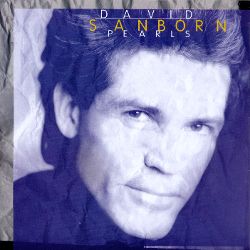
I believe it was the vocalist/contractor Jill Dell’Abate who called and asked if I was available for a David Sanborn session. Jill worked for Tommy LiPuma. I was beyond excited. I was also excited because David Sanborn was not someone who regularly used “young lions” like me on his records. Sanborn used bona-fide “session cats.” Jill told me it was an orchestral date and to bring both my acoustic and electric basses. I think she also asked if I was a member of Local 802, the musicians union. This sounded like that “next level” I’d been dreaming about. No one had ever asked me if I was in the union. Thankfully, I was. I suppose sessions like this were the reason why the late Bob Cranshaw urged me to join Local 802 AFM right after I moved to town. Jill informed me that the session would be at The Hit Factory on West 54th street and the downbeat would be at high noon. I had no idea what I was in for. None!
When I got to the Hit Factory around 11:30AM, I literally walked into a dream. There was David Sanborn warming up, orchestra players beginning to arrive with the great Johnny Mandel standing at the podium going through the scores, Steve Gadd fine tuning his drums, Don Grolnick taking off his coat and getting comfortable near the piano, Don Alias tuning his percussion instruments, and Bucky Pizzarelli setting up his guitar amp. I walked into the control room, and there was both Al Schmitt and Joe Ferla setting up things on the console, and there was the great Phil Ramone (who was just hanging out!) talking with the man, Tommy LiPuma. I almost cried. In one fell swoop, I was awarded entry into a whole lot of records I grew up on. Can you imagine ALL these industry legends and heavyweights in one room as a part of one session? I suppose that wasn’t so unusual at one point in time. Oh, and also, the special guests were Oleta Adams and Little Jimmy Scott. Overwhelming!
This was by all means a union session. I clearly remember the orchestra being firmly planted in place and ready to play by 11:55. When that clock hit 12:00:00, Johnny Mandel’s baton was up! I said to myself, “Damn!! Jill really meant 12:00, didn’t she?” I was just glad that I showed up on time! Punctuality has never been one of my strong points. When Johnny Mandel started up the orchestra, I noticed Tommy was still in the room with the musicians. He was wearing headphones seated comfortably in a chair next to the conductor’s podium. I thought all producers produced from the control room. Why was Tommy out in the room with the musicians? I’d never seen or heard of that. When we finally had a break, I think I asked Steve Gadd if Tommy always stayed in the room with the musicians. He said, “Yeah, that’s his thing. He likes to feel the true energy of the band.” What an amazing concept. He was so unobtrusive.
After three amazing days in the studio with David Sanborn, Tommy LiPuma, Al Schmitt, Johnny Mandel, Steve Gadd, Joe Ferla and so many other heroes, it hit me: I just did a record with all the “session cats.” Was I officially a “session cat” now? I thanked Mr. LiPuma and David for using me on this record, which was later titled Pearls. It really meant a lot.
Around the same time as this session, I made a new friend. My manager at the time, Mary Ann Topper, told me about this Canadian girl she was DYING for me to meet and play with. She told me that this girl had spent time studying with Ray Brown and Jimmy Rowles. Certainly my eyebrows went up then. Anyone who spent time with “Papa Ray” must be swingin’. Her name was Diana Krall. I don’t exactly remember how and when Diana and I finally met, but I know it was either right before or right after Sanborn’s session. She was suuuuch a sweetheart. Up to that point, Diana had hustled around Boston and New York doing any kind of gig she could find – playing piano and singing in hotel bars, restaurants, clubs, cruise ships, everything. She was in the rat race like everyone else. Diana and I hit it off instantly – especially once we started talking about Ray Brown. It was clear that we came from the same Oscar Peterson/Ray Brown/Herb Ellis/Monty Alexander/John Clayton/Jeff Hamilton House of Worship. Shortly after we met, Diana signed to GRP Records and asked if I would play on her new recording. She told me Lewis Nash would play drums (that’s always enough for me to say yes), Ray Brown and Stanley Turrentine would play on a few tracks and Tommy LiPuma would produce it. There he is again!
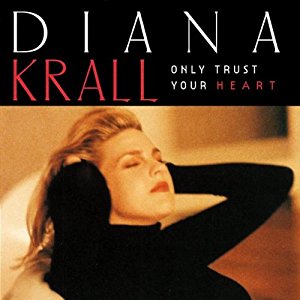
I was so excited to work with my new friend Diana, and also to work with Tommy in a much more intimate setting. This time, we got to talk. I learned all about his history in the record business, his Cleveland upbringing, and his deep love for Cannonball Adderley. Hearing this former alto saxophonist-turned-legendary-record-producer talk about Cannonball was so much fun. These exchanges fueled my deep passion of talking to older musicians. I’ve always taken great pride in obtaining as much information as I can from the older cats. Every time Tommy talked, I listened. He was my new E.F. Hutton. Tommy’s personality, his infectious belly laugh, his genuine love of music and people really touched me. He instantly became one of my favorite people in the world. To say we hit it off would be a gross understatement.
In 1998, Tommy became the chairman of Verve Records. By then, we were close enough that I trusted him as a true friend and mentor. For much of the 90’s, I was Verve’s house bass player, as well as being a solo artist on the label. By the time Tommy took over Verve, the label was slowly but surely moving away from the straight-ahead sound, to a more adult contemporary sound. The Joe Henderson, Roy Hargrove, Abbey Lincoln, Betty Carter, Mark Whitfield era was clearly coming to an end. The Natalie Cole, Diana Krall, Al Jarreau, George Benson, David Sanborn era was about to begin. I could see the writing on the wall. My days as a solo artist on Verve were numbered.
I made what was to be my final album for Verve in early 2000. “Sci-Fi” was released to a moderate reception that September. Even though I had Dianne Reeves, Toots Thielemans and Herbie Hancock as guests, I knew that stylistically it didn’t fit the new Verve. My new manager, David Sholemson, told me that I would most likely soon be dropped from the label. I was cool with that as, like I said, the overall feel of the label had changed. He said that I would probably receive a letter from the label alerting me that they would not renew my contract. Instead of a letter, I got a phone call from Tommy.
In his career as a producer and label executive, I know this wasn’t the first time he had to tell someone they weren’t being re-signed, but I’d like to think that this call broke him up a bit. He so sweetly and kindly expressed to me that my contributions to Verve for the last decade were more than appreciated and I was one of the pillars of the label as a solo artist and a sideman, but the label was headed in a different direction. Here I was getting dropped from the label and I was the one feeling bad because it was my friend Tommy who had to make the call. He actually asked if I would be interested in making a recording more in the “Wes Montgomery A&M” style (aka Smooth Jazz). He knew I wasn’t really interested in that not only because that’s not where I was musically, but I knew that it would only prolong the inevitability of being dropped from the label. After we hung up the phone, go figure, I loved Tommy more than I already did. In fact, about a week later, he called and asked if I could play on a new Verve record he was producing for Natalie Cole. Of course I said yes. I told Tommy our relationship was iron-clad, and it was. Tommy was such a straight up, but empathetic (those two don’t usually go together) person, I couldn’t get upset in the least. I continued to be Tommy’s “go to” guy for his productions. I was always honored when he called.

There were so many good times with Tommy and his alter ego, the legendary engineer, Al Schmitt. Just being around them was a thrill. I had a big 30th birthday party at the now-defunct Lower East Side hallmark, Tonic. Tommy and Al showed up with two cases of wine EACH! I already had about three cases of wine at the party! As I told Tommy, it took me about seven years to get through all that wine! That man was ALWAYS fun to be around.
When I became the co-director of the National Jazz Museum in Harlem in 2004, I asked Tommy if he’d be interested in joining the board. He said yes. It felt great to have a new business relationship with him. One of the programs that I helped to institute at the museum, along with Greg Thomas and Loren Schoenberg, was a monthly series called HarlemSpeaks, a one-on-one interview series. I asked Tommy if he would be one of my guests. I couldn’t wait to officially interview him. One of the things that comes with being a successful producer, is the unenviable daily task of receiving hundreds of demo CDs in the mail. Everyone hopes they can catch that magic from a famous producer and become a star. I asked Tommy during the interview how he dealt with this. He said that he almost never listened to demos, because certainly in the modern era, anybody could sound good on a studio demo. He said he’d much rather hear an artist perform live so he could see and hear the real deal. You can’t fake on a gig. Makes perfect sense, right? Well, after the interview, Tommy got straight bum rushed by about 30 singers with CDs, anyway. One even sang for him acappella right there in the room. Tommy graciously listened, gave a kind compliment (“Sounds great, babe!”), took some of the CDs and I walked him to his awaiting car. He was always such a sport.
Tommy was also a frequent supporter of the organization my wife Melissa and I started, Jazz House Kids. Graciousness was Tommy’s hallmark.
My friend Harry Weinger, another great producer and instructor at NYU, told me when Tommy gave a masterclass at NYU in 2015, the question was asked, “Where do you start when you’re making a record?” Tommy replied, “All my sessions start with a call to Christian McBride. I build my bands around him.” I must have cried for days when I heard that.
I’ve worked with a lot of great producers, but Tommy had so much heart, empathy, information and passion to touch people emotionally. Tommy is also the only man other than my own father to always kiss me on the lips.
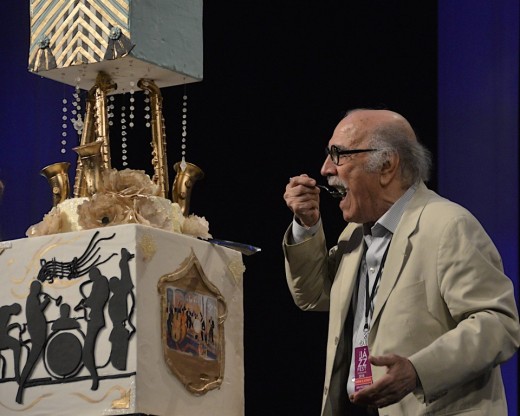
Last year, the Tri-C Jazz Festival in Cleveland threw a star-studded 80th birthday celebration for Tommy at the Palace Theater. I was asked to be the host. I can’t begin to tell you how badly I wanted to do the best job I’ve ever done as a host. Everybody showed up – Dr. John, Leon Russell, Diana, Al Jarreau, The Clayton-Hamilton Big Band…. it was a major event. I even wore my “Tommy LiPuma glasses” in his honor.
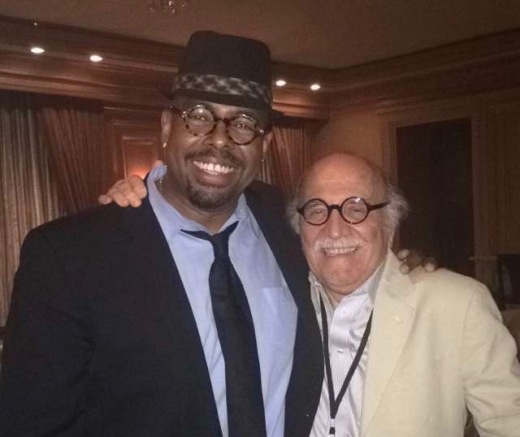
From 1994 until his final session in December – Diana Krall’s Turn Up The Quiet – I got to play on many recordings with some great artists with that unmistakable LiPuma touch: Diana Krall, Natalie Cole, Joe Sample, Willie Nelson, Paul McCartney, Al Jarreau, George Benson, David Sanborn, Queen Latifah, Michael Buble’, Linda Ronstadt, Randy Crawford and so many more. Through these sessions, I made a lot of friends which led to even bigger opportunities in many cases. But more importantly, one of my dreams came true…..I was officially a “session cat”. And….I can say I knew and loved Tommy LiPuma.
Sir Thomas, I love you forever. Rest well, my main man.
Christian
Beautiful tribute….. He was special. A master at what he did and a beautiful soul as well. Thanks Christian….
He left huge footprints! Peace OT
he was the complete package! knew his stuff but didn’t have an attitude. instead he was kind and gentle and warm but always got the job done. he loved musicians, and just people. I don’t think we will see his like again, but he sure accomplished a lot and left us with everyone loving him. Farewell Sweet Prince.
That was touching and very beautiful! So sorry for your loss, but happy to read and to know all this happened to you, at least some part thanks to Tommy… Thank you for this great read!